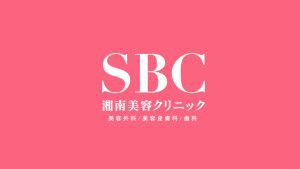Please note that the original article is in Japanese. The following is a summary of its content.
Japan’s Governance Baseline for Listed Companies
Under Japan’s Company Act, companies that are both “Large Companies” and “Public Companies” must adopt one of three robust governance structures.
A Japanese venture company listing on Nasdaq will become a “Public Company” and will almost certainly meet the “Large Company” definition (over ¥500M capital or ¥20B in liabilities). Therefore, a company aiming for Nasdaq must, at a minimum, comply with Japan’s highest domestic governance standards.
The Three Japanese Governance Models
The Japan Company Act provides three options for corporate governance structures:
- Company with Statutory Auditors: Auditors are independent of the Board of Directors and audit the directors’ execution of duties.
- Company with Audit and Supervisory Committee: A committee within the Board of Directors is responsible for auditing, providing a more integrated check function.
- Company with Nominating Committees: This is the U.S-style model where the Board of Directors focuses on supervising “Executive Officers” who manage daily operations. The Board has three sub-committees (Nominating, Audit, Compensation).
Standard Nasdaq Governance Requirements (Rule 5600 Series)
A standard U.S. company listing on Nasdaq must comply with the Rule 5600 series, which requires:
- Board of Directors: A majority of the board must be composed of independent directors. (Note: The U.S. definition of “independent” is not identical to Japan’s “outside” director).
- Audit Committee: Must be composed of at least three independent directors, one of whom must be a “financial expert.”
- Compensation Committee: Must be composed of independent directors.
- Nominating Committee: Must be composed of independent directors.
For IPOs, Nasdaq provides a phase-in period (typically one year) for companies to become fully compliant with these independence rules.
The Foreign Private Issuer (FPI) Exemption
Crucially, Nasdaq provides a significant exemption for Foreign Private Issuers (FPIs) under Rule 5615(a)(3).
An FPI may follow its “home country practice” (i.e., one of the Japanese models) in lieu of the Nasdaq 5600 series governance requirements.
To use this exemption, the FPI must:
- Disclose: Publicly disclose in its annual report (or registration statement) each Nasdaq requirement that it does not follow.
- Describe: Describe the home country practice it follows instead.
The Critical Exception to the Exemption: This FPI exemption is not a complete waiver. An FPI must still comply with Nasdaq’s Audit Committee rules (Rule 5605(c)(3)), including its specific requirements for independence, function, and responsibility.
How U.S.-Listed Japanese Companies (as of 2018) Approach Governance
An analysis of the 12 Japanese companies listed on Nasdaq and the NYSE in 2018 shows a split approach:
- “Home Country Practice” Model (e.g., Toyota, Canon, Honda, LINE): These companies operate under the traditional Japanese “Statutory Auditor” or “Audit & Supervisory Committee” models. They rely on the FPI exemption and have boards with 30-40% outside directors.
- “U.S.-Style” Model (e.g., Sony, Orix, Mitsubishi UFJ, Mizuho): These companies (mostly financial institutions) have adopted the “Nominating Committee” structure. Their board composition is much closer to U.S. standards; Sony’s board, for example, is composed of 10 outside directors out of 13, and Orix’s three key committees are composed entirely of outside directors.
In summary, all Japanese companies on U.S. exchanges use the FPI exemption to some degree (as they are governed by Japanese law), but those using the Nominating Committee structure are designed to be much more closely aligned with U.S. governance ideals.
If you wish to read the full article, please contact us via the inquiry form below.









